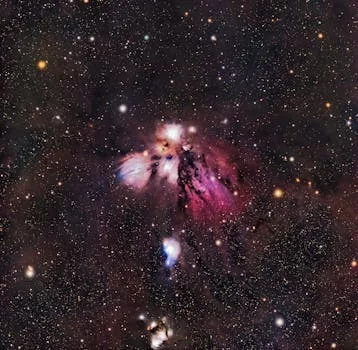
“
Beyond the Milky Way: Imagining New Worlds and Possibilities
Introduction to the Cosmos
Beyond the Milky Way: Imagining New Worlds and Possibilities is an invitation to explore the vast expanse of space that lies beyond our galaxy. The Milky Way, our home galaxy, is just one of billions of galaxies in the observable universe. As we continue to explore and understand the universe, we are constantly reminded of the infinite possibilities that exist beyond our galaxy.
The cosmos is a complex and intricate web of galaxies, stars, planets, and other celestial objects. The universe is estimated to be around 13.8 billion years old, and it is still expanding. The expansion of the universe is thought to have begun during the Big Bang, an event that marked the beginning of the universe as we know it.
Understanding the Universe
To understand the universe, we must first understand the building blocks of the universe. Atoms, the smallest units of matter, are the foundation of everything around us. Atoms are made up of protons, neutrons, and electrons, which are the fundamental particles that make up the universe.
As we move beyond the atomic level, we enter the realm of astronomy, the study of celestial objects and phenomena. Astronomy has allowed us to understand the universe in greater detail, from the life cycles of stars to the formation of galaxies.
Exploring New Worlds
One of the most exciting aspects of space exploration is the discovery of new worlds. Exoplanets, planets that orbit stars outside of our solar system, have been discovered in large numbers in recent years. These exoplanets offer us a glimpse into the diversity of planetary systems that exist beyond our own.
Some exoplanets are similar in size and composition to Earth, while others are gas giants or icy worlds. The discovery of exoplanets has also led to a greater understanding of the formation and evolution of planetary systems, as discussed in related research.
Imagining the Possibilities
As we explore the universe, we are constantly reminded of the infinite possibilities that exist. From the potential for life on other planets to the existence of dark matter and dark energy, the universe is full of mysteries waiting to be unraveled.
The search for extraterrestrial life is an active area of research, with scientists using a variety of methods to search for signs of life. While we have not yet found definitive evidence of extraterrestrial life, the possibility of life existing elsewhere in the universe is considered to be quite high, as highlighted in recent explorations.
Takeaways:
- The universe is vast and complex, with billions of galaxies and celestial objects.
- The discovery of exoplanets has led to a greater understanding of the diversity of planetary systems.
- The search for extraterrestrial life is an active area of research, with scientists using a variety of methods to search for signs of life.
- The universe is full of mysteries waiting to be unraveled, from the potential for life on other planets to the existence of dark matter and dark energy.




